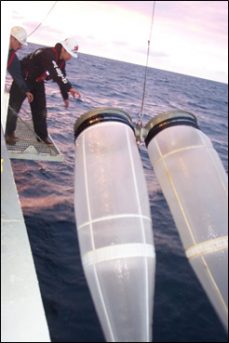DNA sequencing used to identify larval fish

SCCWRP and its partners have completed a proof-of-concept study showing that DNA sequencing methods can be used to identify communities of ichthyoplankton, or the eggs and larvae of fish, collected from across the Southern California Bight continental shelf.
During the study, researchers successfully identified dozens of species of ichthyoplankton contained in the field samples using single-sample DNA sequencing, or Sanger sequencing. Traditional microscope-based identifications were used to confirm the accuracy of the DNA-based identifications.
Understanding the composition of larval fish communities could serve as an important line of evidence for evaluating the health of marine ecosystems. The insights from ichthyoplankton communities could inform fisheries management decision-making and lead to more scientifically robust assessments of marine habitats.
Based on the study’s findings, researchers will continue to pursue development of this metabarcoding approach for assessing ichthyoplankton community health.
More news related to: Bioassessment, DNA Barcoding